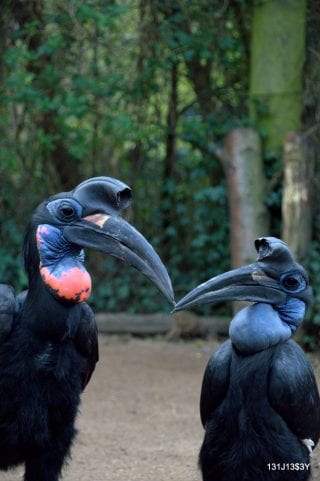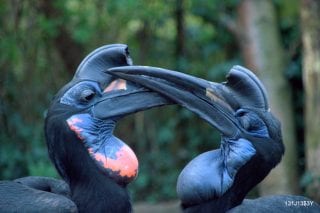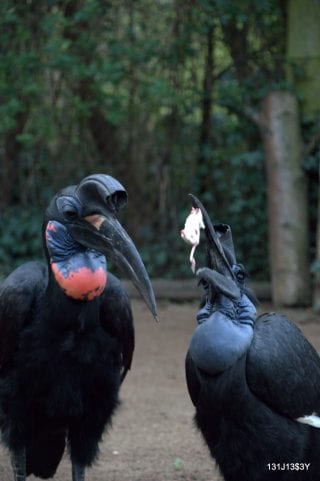Fun facts
Made for walking
Abyssinian ground hornbills can fly but prefer to walk. They can travel long distances on the ground. They even prefer to escape predators on foot rather than by flying.
Feather eyelashes
Abyssinian ground hornbills have long ‘eyelashes’, which are actually modified feathers. They help protect their eyes from dirt and injury.
Duets at dawn
They make a deep booming call that sounds like a dogs bark and the male and female sing in duets around dawn.
Special beak
Abyssinian ground hornbills have a large bony part above their beak. This is called a casque and is a spongy structure made of keratin, which is the same material as hair and nails. This casque acts as an echo chamber, amplifying their calls to make them sound louder. They use these loud calls to attract a mate.



